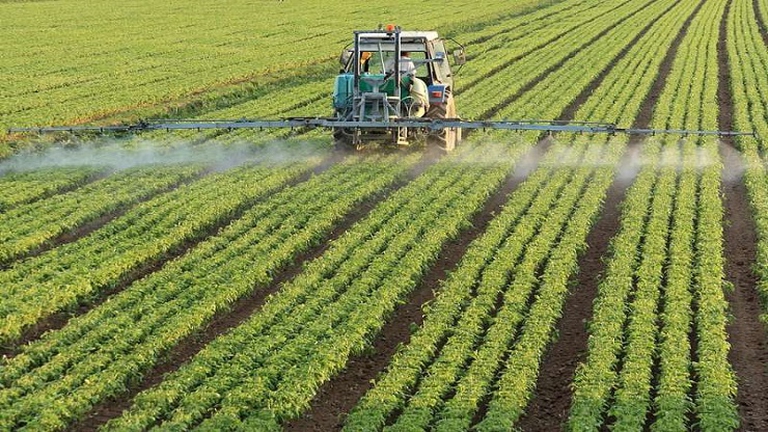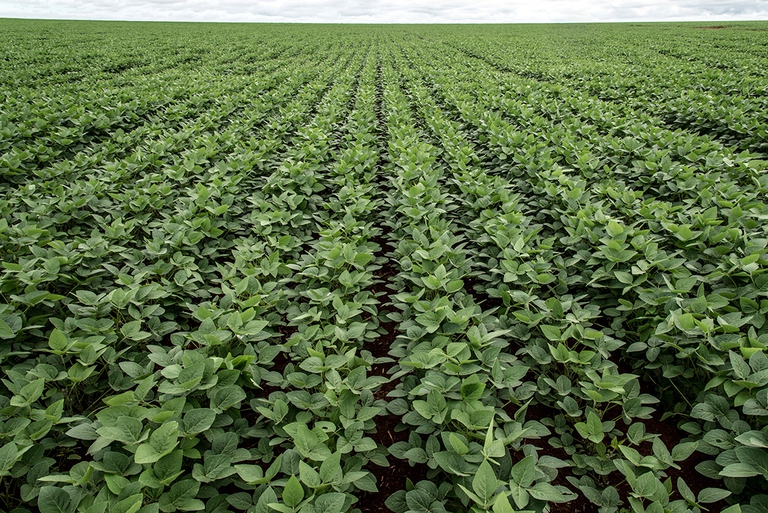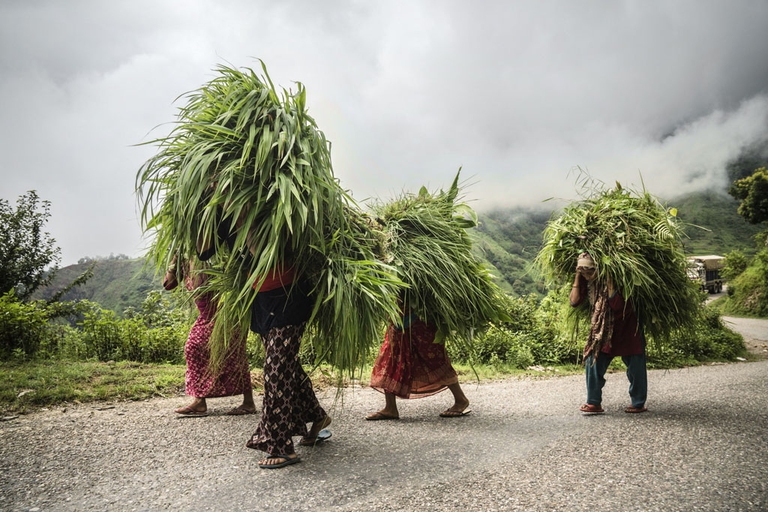
Factory farming conditions and antibiotic-resistant pathogens emerging as a result of them pose an existential threat to humans in the form of zoonotic diseases. Why it’s time to produce and consume food more thoughtfully.
A transition towards agroecology is needed to beat the diktats of a production model that is poisoning our Planet and our lives. The op-ed by Navdanya International.
Agroecology represents a solution to the interconnected crises of our time, not only in the agricultural sector, but also in the economic and social spheres. For over thirty years Navdanya, together with other civil society organizations from all over the world, has been promoting a regenerating and ecologic circular approach to contrast the rising environmental degradation, poverty, sanitary emergencies and malnutrition. Changing the current extractive agricultural paradigm, based on the one-way exploitation of nature’s resources and wealth, is to be considered a priority of our times.
A paradigm change of which, at last, the FAO has taken notice in the occasion of the Second Symposium on Agroecology held in Rome from 3 to 5 April. This is an important step in the right direction, considering that both the intervention of FAO Director General Graziano da Silva and the final document of the Symposium are denouncing the un-sustainability of the industrial agricultural model of the Green Revolution. In fact, they highlight how agroecology directly contributes to some of the most important SDGs (Sustainable Development Goals), such as poverty and hunger eradication, guaranteeing the quality of education, the achievement of gender equality, increased efficiency in water use, the promotion of decent work conditions, guaranteeing sustainable consumption and production, consolidation of climate resilience, sustainable use of marine resources and stop the biodiversity loss.
The studies and results of the projects presented by the over 350 civil society organizations present at the symposium prove how agroecology works and could possibly work even better with governmental and scientific research support. The FAO has recognised the importance of farmers’ traditional knowledge and their crucial role on the food security issue. As such, what small producers and consumers must claim is a new agricultural and economic paradigm, a food culture based on health, in which ecological responsibility and economic justice take precedence over today’s extractive production systems based on consumption and profits. Farmers and consumers participation is essential to succeed in overcoming a production model that is poisoning our Planet and life, as well as to promote a new production model that preserves biodiversity and promotes environmental sustainability. Agroecology is, in fact, not only a set of techniques, but a whole vision of life, based on the concept of integration between human beings and nature, as underlined by the Declaration of small producers and civil society organizations.
The present industrial food system, based on monocultures, widespread use of agrochemicals, commercialization of genetically modified seeds, and supported by neoliberal policies and trade liberalization, represents a serious threat with high social, environmental and health costs. Over the years, we have allowed multinational companies to consolidate their monopolies and gain control of our seeds, food and health. Industrial agriculture was founded and promoted on the erroneous idea that increasing low-cost food production was a necessary step to feed the growing world population. However, after having contaminated a consistent part of the soil and aquifers, damaged, in many cases irreparably, biodiversity and decisively contributed to the worsening of the present climate crisis, industrial agriculture can claim only a relatively small portion of the global food production. The majority of the food we consume is, in fact, still produced by small and medium farmers, while the vast majority of crops coming from the industrial sector, such as maize and soya, is mainly used as animal feed or to produce biofuels. It is the failure of the green revolution, given that the “increase of production and productivity has reached a high environmental cost”, as Da Silva underlined, without solving the issue of world hunger. In 2016, 815 million people have suffered from malnutrition, while over 1.9 billion adults worldwide were overweight, with more than 650 million being obese.
The problem isn’t productivity itself, but distribution, poverty and food quality. We must promote food sovereignty, starting from seed sovereignty and prevent multinational companies from taking control over our democracies and food production systems. With the evident failure of the green revolution, it is necessary to stop a productive model which deprives small farmers of the means to guarantee their own livelihoods, expels rural populations from their lands to make way for industrial agriculture, and reduces biodiversity in favour of monocultures.
In this scenario, consumers have no choice but to buy unhealthy food, cultivated in contaminated soils and poisoned by chemicals. Another side effect of the green revolution, highlighted by FAO’s DG, is that “the widespread use of chemical fertilizers and pesticides has contributed to soil degradation, water pollution and biodiversity loss”. A correct statement, to which it would be useful to add the estimated number of loss of human lives recently asserted by Hilal Elver, UN Special Rapporteur on the right to food, who revealed how pesticides have “catastrophic effects on the environment, human health and society as a whole”, and are responsible for around 200,000 deaths per year.
Beyond the myths and propaganda created by the multinationals, there is much knowledge, research and cases to state that we don’t need to use agro-toxic products to produce our food. When farmers are sovereign in agriculture, ranging from seeds to agricultural inputs, reducing trade dependency and building resilience by using local resources, agricultural systems become ecologically, socially and economically sustainable. Industrial agriculture has not only contributed to damaging the environment, reducing nutrients in crops and increasing health problems, but has also had a major impact on climate change. Nowadays, industrial agriculture and globalised food system are responsible for 40 per cent of all greenhouse gas emissions. Moreover, monocultures are vulnerable to unstable climate conditions. A study conducted by Navdanya in India in four different agro-ecosystems (dry, semi-dry, sub-humid and humid) showed how organic agriculture can help mitigate climate change and increases resilience.
FAO and other UN organisations are now called to increase their efforts to support agroecology in the world and to help civil society organizations and small producers in putting pressure on governments in order to take appropriate measures to diversify commercial policies, launch new public programmes for education, technical and financial assistance, for the recognition and promotion of agroecology.
Siamo anche su WhatsApp. Segui il canale ufficiale LifeGate per restare aggiornata, aggiornato sulle ultime notizie e sulle nostre attività.
![]()
Quest'opera è distribuita con Licenza Creative Commons Attribuzione - Non commerciale - Non opere derivate 4.0 Internazionale.
Factory farming conditions and antibiotic-resistant pathogens emerging as a result of them pose an existential threat to humans in the form of zoonotic diseases. Why it’s time to produce and consume food more thoughtfully.
The world of cinema recognises the link between food choices and the climate crisis by offering vegan menus for awards season events, including at the most important of them all: the Oscars.
Let’s look at the reasons behind the growth of veganism in India, as a small yet vocal section of the population turns towards this diet and lifestyle in the largest milk producing country in the world.
by Jeffrey Y. Campbell, Manager of the Forest and Farm Facility at FAO In the Ecuadorian Amazon, Kichwa farmers grow dozens of products on tiny parcels of land. Their lands hum with biodiversity, yielding nutritious foods that have sustained families for generations. Wandering among fruit and nut trees and crops, these indigenous agroforesters fill their baskets
Mint has many health benefits, but in food it’s often accompanied by artificial green colourings. Instead, Galatea has created a green mint ice cream in a completely natural way.
We’re talking about Galatea, a company that produces semi-finished products for artisanal ice creams using high quality ingredients, natural colouring, excluding thickeners and hydrogenated fats, respecting the environment and supporting the less fortunate.
The mad rush to fake food, like fake meat made with genetically-modified soy, ignores the importance of the diversity of our foods and culinary cultures. It’s a recipe to accelerate the destruction of the Planet and our health.
Like with all foods, the quality of an ice cream can be discerned by reading its label. An expert explains how to do this, and tells us how their company steers clear of chemicals, using only natural ingredients to produce an excellent and “free” ice cream.
Quality ingredients, no artificial colouring and hydrogenated fats. These are the main features of a great ice cream. But what makes an ice cream parlour “good”, i.e. sustainable?











